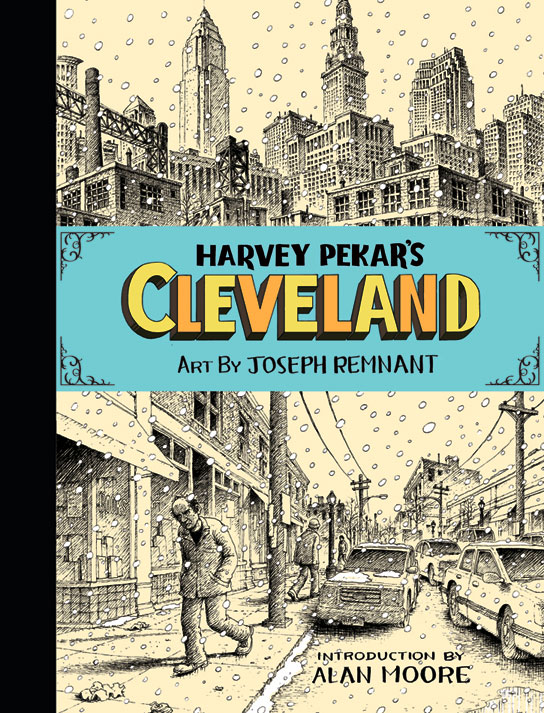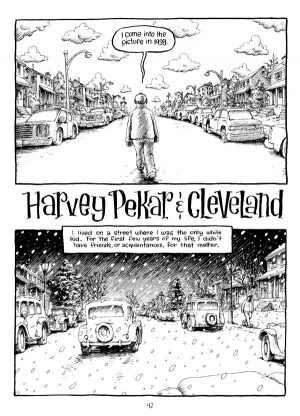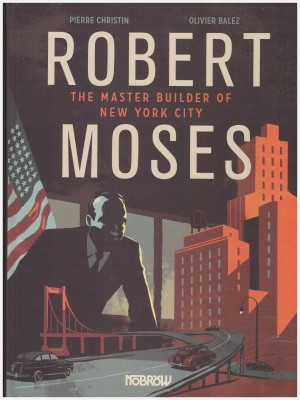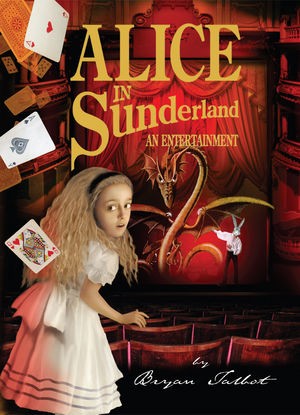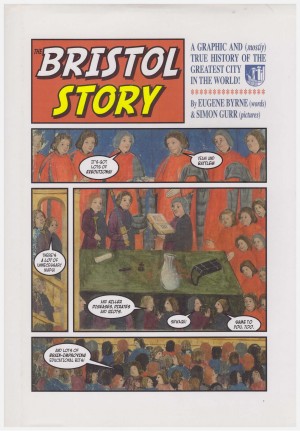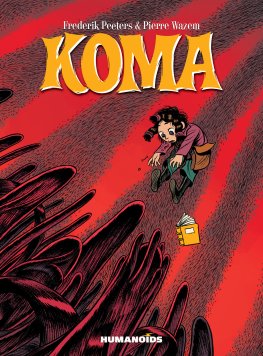Review by Frank Plowright
Harvey Pekar was enmeshed within Cleveland. He lived there, he worked there, and he probably drew more attention to the city than any other contemporary resident. For all the moaning and fear that characterised Pekar in his American Splendor series, he was also an incisive critic with wide-ranging interests, and with the wonder of hindsight it appears odd that he hadn’t previously compiled his own history of Cleveland. Sadly, Pekar didn’t live to see publication, but has bequeathed his assessment of the environment that nurtured him.
This being Pekar, though, he embeds himself in the narrative, relating his own story in parallel with the city. Much of this has been covered within the pages of his American Splendour issues, but in piecemeal fashion, and while he hated change Pekar never feared development, as contradictory as that may seem. As Pekar’s primary subject of study was himself, it’s fitting that age modifies the recollection of events first detailed in his comics decades ago, although his younger years as covered in The Quitter, retain the same perspective.
Those familiar with Cleveland’s development, or with little interest in history, may find the opening forty pages dry material. Others may be astounded to realise that a river can catch fire, surprised that in the 1950s Cleveland was the sixth largest city in the USA, or appreciate the consideration of how a city comes together. From that point Pekar acts as a virtual tour guide, illuminating his surroundings and his life in the manner to which his regular readers have become accustomed. They’ll know this can’t be misconstrued as a sentimental romanticising, but the knowledge of his death recasts scenes such as anticipating a greater yield from his back garden vegetable patch the following year. There’s a poignancy of his looking in the mirror and musing that maybe he’ll keep going for a while.
Artist Joseph Remnant is a fine intuitive collaborator for Pekar. His accomplished black and white penmanship recalls the classic pre-World War I illustrators, and Robert Crumb, the most acclaimed of the many artists who drew Pekar’s recollections. He illustrates an expressive Pekar, constantly in motion, as he tramps the city streets holding forth as if being filmed by Nick Broomfield. His cityscapes are particularly fetching, in particular adding an idyllic glow to snowy conditions resolutely uncomfortable in reality.
There are a couple of minor repetitions that perhaps should have been edited out, but as an encapsulation of who Harvey Pekar was and the effect of his surroundings this is an excellent legacy.
